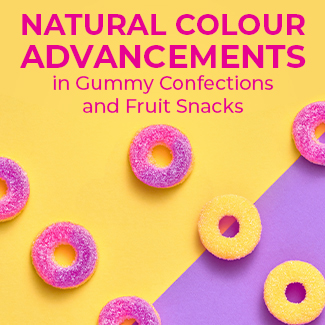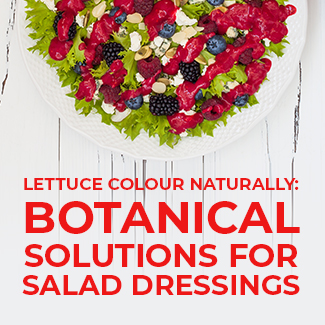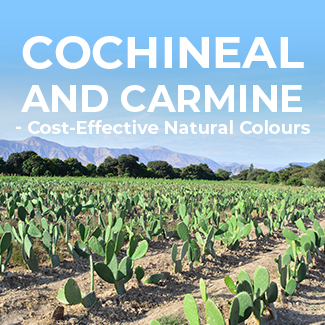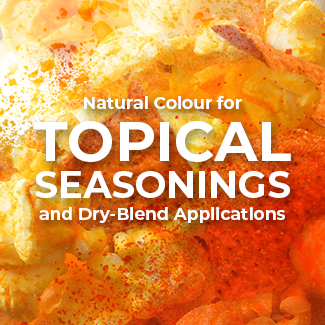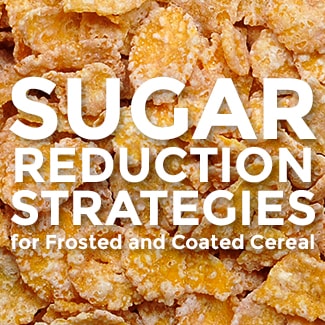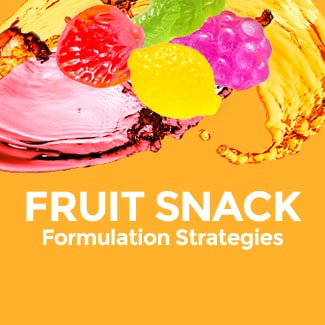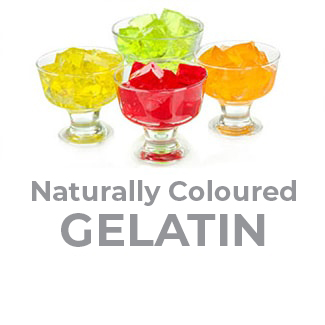Natural Brown Solutions to Offset Cocoa Reduction
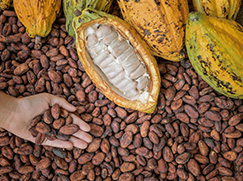 From baked goods to cereals and ice cream, cocoa is a commonly used ingredient across a broad range of food applications. However, there is a lot of concern about the future of cocoa—it’s predicted to be as dark as the bean from which it originates. Threatened by global rising temperatures and drier weather conditions, the survival rate of cocoa plants continues to diminish. As a result, purchasing managers are experiencing dramatic swings in cocoa prices, up 31% this year. Additionally, scientists are exploring gene editing techniques in hopes of preventing future crop and cost volatility.
In response to all of this uncertainty, food manufacturers are reducing cocoa content to their respective points of affordability. To offset colour loss and changes in taste profile, we are seeing many product developers turn to brown colourants and chocolate flavours.
From baked goods to cereals and ice cream, cocoa is a commonly used ingredient across a broad range of food applications. However, there is a lot of concern about the future of cocoa—it’s predicted to be as dark as the bean from which it originates. Threatened by global rising temperatures and drier weather conditions, the survival rate of cocoa plants continues to diminish. As a result, purchasing managers are experiencing dramatic swings in cocoa prices, up 31% this year. Additionally, scientists are exploring gene editing techniques in hopes of preventing future crop and cost volatility.
In response to all of this uncertainty, food manufacturers are reducing cocoa content to their respective points of affordability. To offset colour loss and changes in taste profile, we are seeing many product developers turn to brown colourants and chocolate flavours.
Correcting Colour Loss After Cocoa Reduction
From a shade standpoint, chocolate colours are not overly challenging. There’s a natural solution for just about every application where cocoa reduction could be a possibility. Sensient’s Sienna fruit juice would offset colour loss relatively easily in lighter brown shades of mainly baked and dry grocery goods, while industry innovations would close the gap on more of the complex applications like icing and cereals. Let’s look at some examples on bringing cocoa alternatives to life…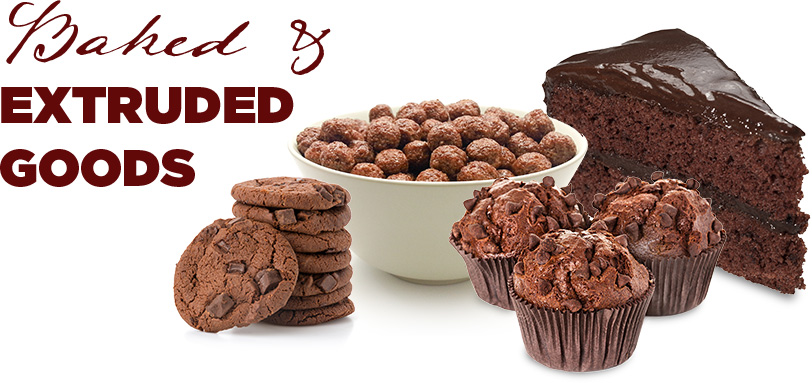 For dark chocolate shades in baked good applications, a common caramel-free approach would be a combination of a natural red, like a beet or anthocyanin, a natural yellow, such as beta-carotene or turmeric, and a natural blue source. This blend produces excellent dark brown shades assuming the pH is above 4. Given the heat processing associated with baked goods and especially extrusion, heat and pH stable components are essential for these applications. Fortunately, Sensient has a novel blue vegetable juice that works very well in this scenario, as well as a heat-stable beet.
There is one drawback to this approach. Natural blue vegetable juice is generally more expensive than other natural colour sources, so cost-in-use for this strategy tends to be a bit higher when compared to costs associated with caramel. In these instances, the Sienna fruit juice, although lighter in brown, could be used to bulk the base of the colour solution to lower the usage rate of the blue component. Sienna is a great option for milk chocolate shades and provides cost-in-use advantages, as well as excellent heat, pH and light stability.
For dark chocolate shades in baked good applications, a common caramel-free approach would be a combination of a natural red, like a beet or anthocyanin, a natural yellow, such as beta-carotene or turmeric, and a natural blue source. This blend produces excellent dark brown shades assuming the pH is above 4. Given the heat processing associated with baked goods and especially extrusion, heat and pH stable components are essential for these applications. Fortunately, Sensient has a novel blue vegetable juice that works very well in this scenario, as well as a heat-stable beet.
There is one drawback to this approach. Natural blue vegetable juice is generally more expensive than other natural colour sources, so cost-in-use for this strategy tends to be a bit higher when compared to costs associated with caramel. In these instances, the Sienna fruit juice, although lighter in brown, could be used to bulk the base of the colour solution to lower the usage rate of the blue component. Sienna is a great option for milk chocolate shades and provides cost-in-use advantages, as well as excellent heat, pH and light stability.
 If cutting back on cocoa in compound coatings or frostings and icings is a possibility for you, formulating with natural colours is a little more complex. However, unique solutions are available. For example, when dealing with water-soluble natural colours, a natural dye will lead to an undesired outcome. There simply isn’t enough water in the application to hydrate the powder, so you run into specking issues. Traditionally, the way to overcome this issue is to increase the usage rate. However, this approach will quickly increase cost-in-use and adversely impact texture and taste.
Plating grade natural colours that perform like synthetic lakes are the most ideal solution for coatings, icings and frostings. Sensient’s Microfine™ natural colour line is a great example. To ensure homogeneity, a high level of mixing is usually required for the Microfine powders. I would consider the oil-based dispersions of the Microfine portfolio to be the optimal solution in this case, as they require less mixing than the powders. Either way, the powders and dispersions eliminate specking entirely. Microfine™ can hit any shade in the brown spectrum without using caramel colours.
If cutting back on cocoa in compound coatings or frostings and icings is a possibility for you, formulating with natural colours is a little more complex. However, unique solutions are available. For example, when dealing with water-soluble natural colours, a natural dye will lead to an undesired outcome. There simply isn’t enough water in the application to hydrate the powder, so you run into specking issues. Traditionally, the way to overcome this issue is to increase the usage rate. However, this approach will quickly increase cost-in-use and adversely impact texture and taste.
Plating grade natural colours that perform like synthetic lakes are the most ideal solution for coatings, icings and frostings. Sensient’s Microfine™ natural colour line is a great example. To ensure homogeneity, a high level of mixing is usually required for the Microfine powders. I would consider the oil-based dispersions of the Microfine portfolio to be the optimal solution in this case, as they require less mixing than the powders. Either way, the powders and dispersions eliminate specking entirely. Microfine™ can hit any shade in the brown spectrum without using caramel colours.
 Since an ice cream’s cocoa content provides the majority of its colour, decreasing the cocoa matter would most likely change the overall appearance and colour uniformity. Developers can use natural browns like Sienna or simple blends of natural blues, yellows and reds to either darken the base or enhance colour uniformity. Standard yellow carotenoids within a brown blend would require emulsification like Sensient’s Advanced Emulsion Technology (AET™) for optimal performance and stability, since they are inherently oil-soluble.
While we certainly hope science can help save the future of the world’s cocoa plants, food manufacturers have the option to lean on alternatives if necessary. If you are planning to partially or completely remove cocoa, the good news is there are natural colour options to offset any changes to your product’s overall appearance. If interested in trialing any of our natural brown solutions, you can request samples here.
Did we miss your chocolate application? You can schedule a private consultation for us to discuss here.
Since an ice cream’s cocoa content provides the majority of its colour, decreasing the cocoa matter would most likely change the overall appearance and colour uniformity. Developers can use natural browns like Sienna or simple blends of natural blues, yellows and reds to either darken the base or enhance colour uniformity. Standard yellow carotenoids within a brown blend would require emulsification like Sensient’s Advanced Emulsion Technology (AET™) for optimal performance and stability, since they are inherently oil-soluble.
While we certainly hope science can help save the future of the world’s cocoa plants, food manufacturers have the option to lean on alternatives if necessary. If you are planning to partially or completely remove cocoa, the good news is there are natural colour options to offset any changes to your product’s overall appearance. If interested in trialing any of our natural brown solutions, you can request samples here.
Did we miss your chocolate application? You can schedule a private consultation for us to discuss here.












